You searched for: 谷歌商店优化模式【TG飞机:@bapingseo】丹麦引流神器【TG电报:@bapingseo】什麽是谷歌海外推廣【Telegram:@bapingseo】创世红海app最高注册邀请码官网时时彩开元app玩的人多吗?9Odqms/167877.html
<< Previous | Displaying results 231-240 of 316 for "谷歌商店优化模式【TG飞机:@bapingseo】丹麦引流神器【TG电报:@bapingseo】什麽是谷歌海外推廣【Telegram:@bapingseo】创世红海app最高注册邀请码官网时时彩开元app玩的人多吗?9Odqms/167877.html" | Next >>
-
Berthold Mewes
ID CardBerthold was an only child. He was raised in Paderborn, a town in a largely Catholic region of western Germany. Paderborn was near Bad Lippspringe, where there was a Jehovah's Witnesses congregation engaged in missionary work. Beginning in 1933, the Nazis moved to outlaw Jehovah's Witness activities. 1933-39: When Berthold was 4, his parents became Jehovah's Witnesses and he began to attend secret Bible meetings with them. Berthold began public school in 1936. His mother was arrested in 1939 and sent to…
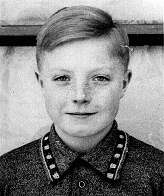
-
Anna Pfeffer
ID CardAnna, affectionately known as Aennchen to her family, was the daughter of non-religious German-Jewish parents. Her father died when she was young and Anna was raised in the town of Bruchsal by her impoverished mother. Anna married a well-to-do, older gentleman in 1905 and moved to the fashionable city of Duesseldorf, where he was a department store manager. By 1933 they had two grown sons. 1933-39: The Pfeffer's comfortable life unraveled after the Nazis came to power. The Nazis arrested Anna's brother…
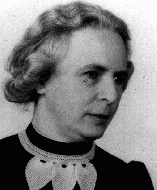
-
Dora Unger
ID CardDora, her parents, brother, aunt, uncle, and two cousins lived together in her grandfather's home in Essen, Germany. The Ungers were an observant Jewish family, and when Dora was 8, she began to regularly attend meetings of Brit HaNoar, a religious youth organization. 1933-39: In October 1938 a teacher, with tears in her eyes, came to Dora at the municipal pool, saying "Jews cannot swim here anymore." Just weeks later, on November 9, Jews were arrested and their property destroyed. A neighbor tried to…

-
Judith Beker
ID CardJudith was one of three children born to a Yiddish-speaking Jewish family living on a farm near the Lithuanian town of Jonava. Judith's mother had an extensive Jewish education and taught her daughters at home. Her son, Abe, attended a Jewish religious school in Jonava. Judith's father worked in the logging industry. 1933-39: In the fall of 1938, six months after her father died, Judith and her mother moved to Kovno, the capital of Lithuania. She was 9 years old. Kovno at that time had a large Jewish…

-
Zofia Yamaika
ID CardZofia was raised in a well-to-do, prominent Hasidic Jewish family in Warsaw. Uneasy with the constant tension between the Polish people and the Jewish minority, Zofia joined the communist student club Spartacus when she was a teenager. Spartacus actively campaigned against the growing fascist movement in Europe. 1933-39: When Warsaw surrendered to the Germans on September 28, 1939, Zofia was 14 years old. She stopped going to school. Though the Nazis banned Spartacus, she secretly helped to revive the…
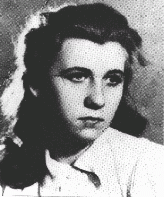
-
Naftali Saleschutz
ID CardNaftali was the youngest of nine children born to devout Hasidic Jewish parents living in Kolbuszowa. In the Hasidic tradition, he wore a long black coat and shoulder-length earlocks. He first faced antisemitism in the second grade when his teacher cut one earlock off each Jewish boy. Naftali escaped the teacher's shears, and his father, a respected merchant, had the teacher suspended. 1933-39: On September 9, 1939, the German army invaded Naftali's town and decisively defeated a small contingent of…
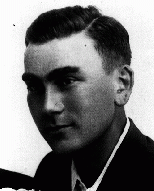
-
Leo Bretholz
ID CardLeo was the oldest child and only son of Polish immigrants in Vienna. His father, a tailor and amateur Yiddish actor, died of an illness in 1930 when Leo was 9. His mother supported the family by working as an embroiderer; Leo helped out by looking after his two younger sisters. They lived in one of Vienna's large Jewish districts on the east side of the Danube Canal. 1933-39: Anti-Jewish sentiment escalated after Germany annexed Austria in 1938. Jewish men, including some of Leo's uncles and neighbors,…

-
Dorotka Goldstein
ID CardDorotka was the youngest of three children in a Jewish family. Her father was the director of the Jewish Telegraphic Agency in Warsaw and worked for a popular newspaper. An avid Zionist, he had traveled to Palestine. 1933-39: Dorotka's father established a soup kitchen in Warsaw for Jewish refugees who had fled from Germany. In September 1939 Dorotka was supposed to begin first grade when war broke out. Her father escaped to Vilna with other Jewish leaders. People were suffering, but she didn't understand…
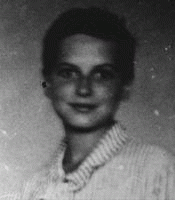
-
Margot Heumann
ID CardThe older of two girls, Margot was born to Jewish parents living in a village close to the Belgian border. The Heumanns lived above their general store. Across the street lived Margot's grandfather, who kept horses and cows in his large barn. When Margot was 4, her family moved to the city of Lippstadt. As a young girl, she learned to swim in the Lippe River, which flowed behind their garden. 1933-39: When Margot was 9, her family moved to the nearby city of Bielefeld, where she was enrolled in public…
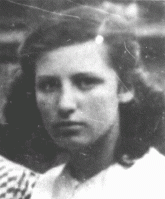
-
Welwel Wainkranc
ID CardThe third of five brothers, Welwel was born to Jewish parents who lived 35 miles east of Warsaw in the small predominantly Jewish town of Kaluszyn. His father was a cattle merchant who purchased cows and sold the meat to butchers in the Warsaw region. Welwel spent most of his free time with a group of Jewish friends who lived in his neighborhood and who attended the same public school. 1933-39: Every summer evening Welwel, Abram Kisielnicki, and some other pals, like to stroll along Kaluszyn's main…

